If you love food, you’re going to love Studio Ghibli. Sometimes called the “Disney of Japan,” Studio Ghibli has charmed worldwide audiences for over twenty years. One of the most beautiful elements of any Studio Ghibli production is the food: drawn with careful detail and delicious realism, it is a mouthwatering achievement in every film.
It’s remarkable how much of an emphasis Studio Ghibli gives to food. One of the studio’s biggest hits, Spirited Away, actually revolves around food. Without the gluttony of Chihiro’s parents and No Face, the film would have no plot. In addition to Spirited Away, food appears in every one of Studio Ghibli’s films, from Sophie’s simple meals over the fire in Howl’s Moving Castle to Ponyo’s obsession with ham. (In case you’re wondering, goldfish in real life don’t eat ham–I’ve tried.)
Here are a few of the most delicious Studio Ghibli meals:
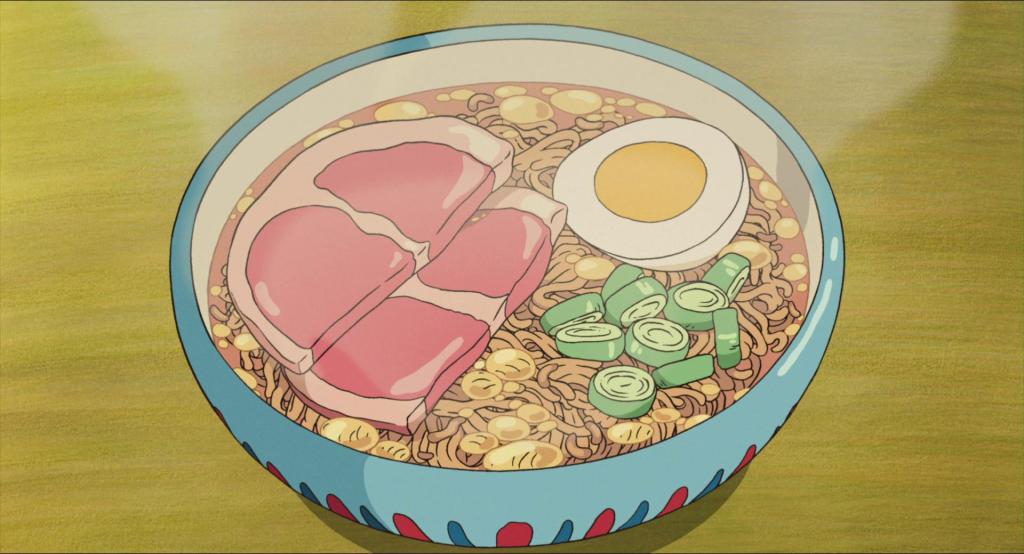
Photo courtesy of Imgur
Ramen (ラーメン) is a college kitchen staple. We’re all familiar with the packages of dehydrated ramen from Costco, but these are a far cry from the savory soup that Ponyo and Sosuke feast on. Studio Ghibli’s version of the noodle soup is probably made with a meat broth flavored with miso and garnished with ham, a hard-boiled egg and chopped scallions. Made right, ramen is the ultimate comfort food and nothing like what you’d find from those packages you buy for a few cents.
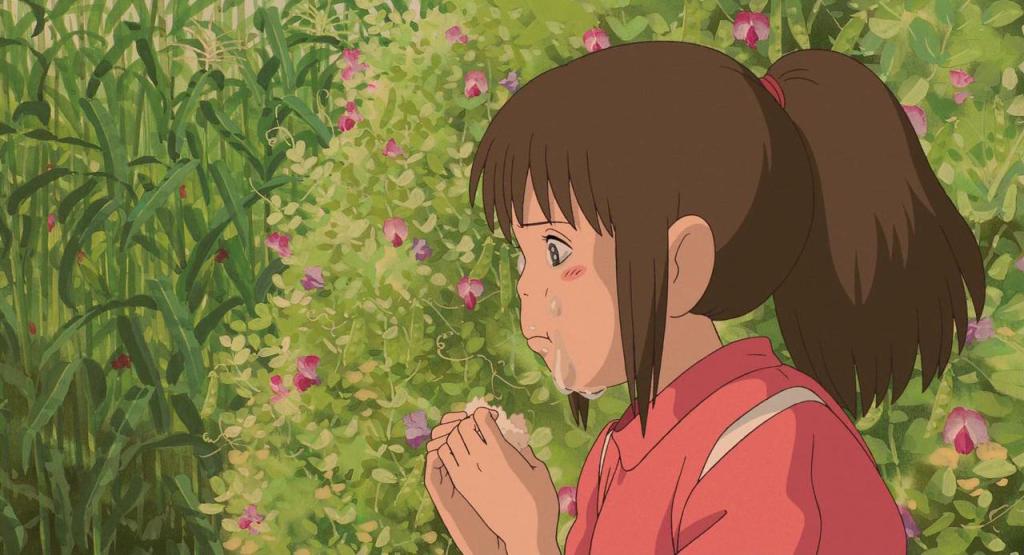
Photo courtesy of Imgur
Onigiri (おにぎり) are rice balls–not sushi! Onigiri is simply made of rice and salt, sometimes wrapped with a little bit of seaweed. It’s a great way to keep rice convenient and preserved. Onigiri doesn’t always have a filling but oftentimes it will contain meat or vegetables in the center. The shapes vary, too, but triangles are the most popular shape.
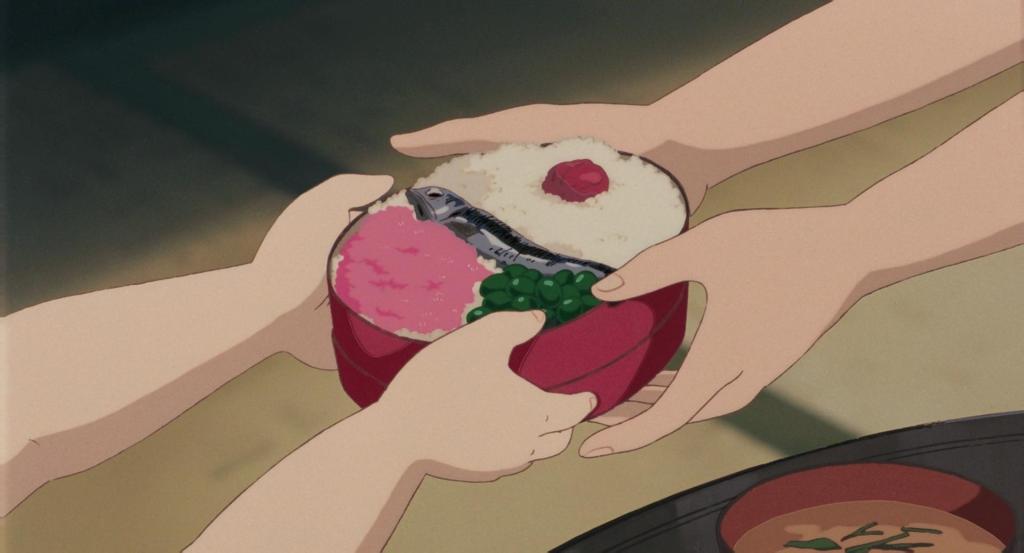
Photo courtesy of Imgur
Bento (弁当) is the Japanese name for a little lunch box. Bento boxes are a common way to pack meals for school or work. In Japan, there are often contests for bento box arrangements. In the film From Up on Poppy Hill, Umi prepares bento boxes for herself and her family. The mastered aesthetic of a bento box has completely changed the way I look at my tupperware of leftovers.
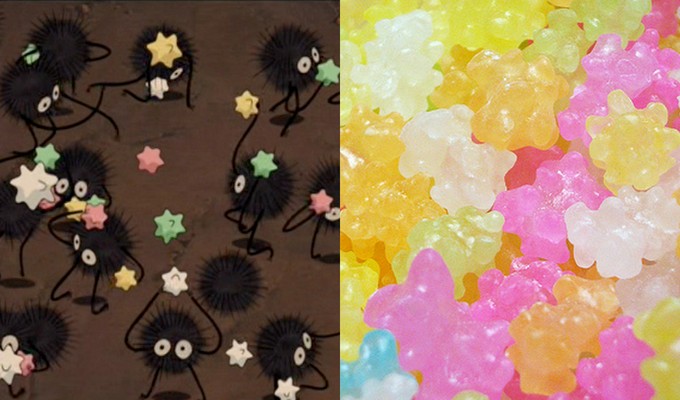
Photo courtesy of Tofugu
Konpeitō (コンペイトー) is a Japanese rock candy made from sugar, water, and food coloring. It originated in Portugal as confeito, which means “confection” or “candy,” and was introduced to the Japanese in the 16th century by traders. It’s a fun treat and you can use it in tea or coffee in place of sugar cubes. Soot sprites love konpeitō!
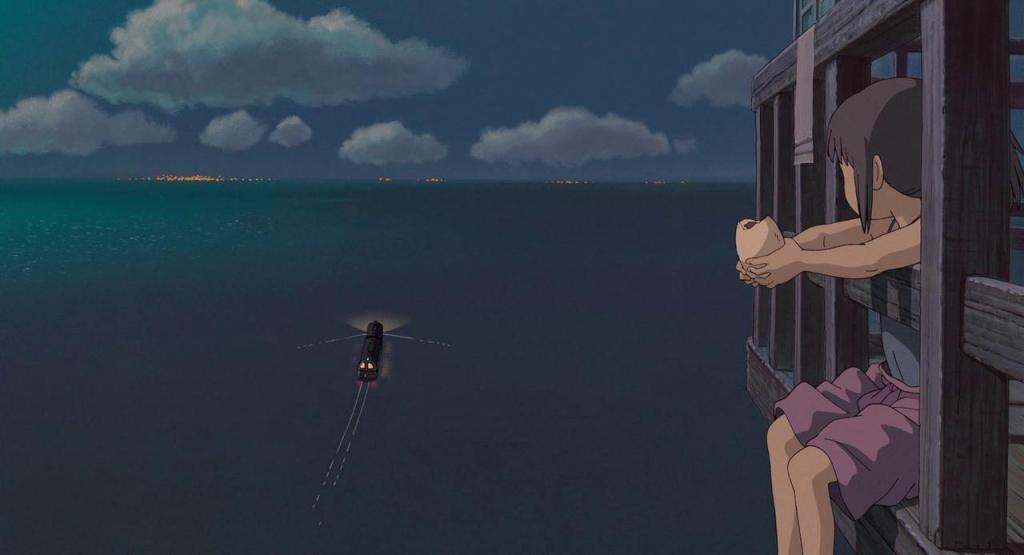
Photo courtesy of Imgur
Anpan (あんパン) is a Japanese sweet bun stuffed with red bean paste. The dish is steamed and served as a dessert. Sometimes, anpan is made with different fillings like white bean, sesame or chestnut paste. Chihiro is comforted by a few sweet mouthfuls of anpan after a long day cleaning the river god in the bath house where she works.
There are dozens of other delicacies throughout Studio Ghibli’s productions, from Japanese cuisine to Western favorites like eggs and bacon. When you watch another one of the studio’s masterpieces, keep an eye out for the sweet and savory details.

